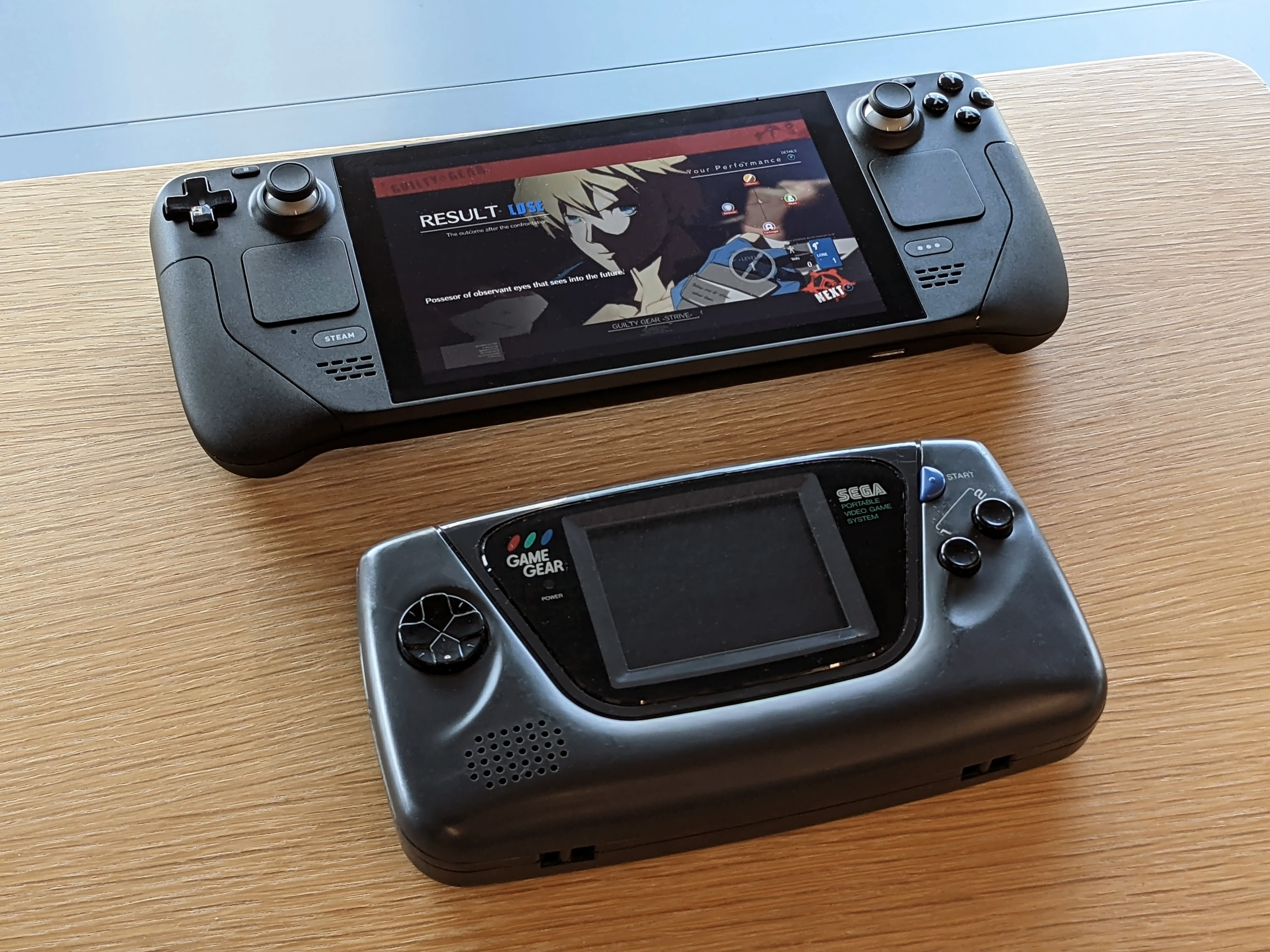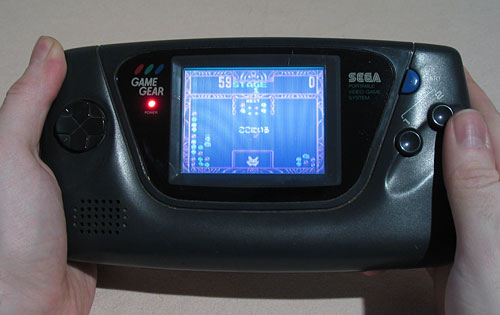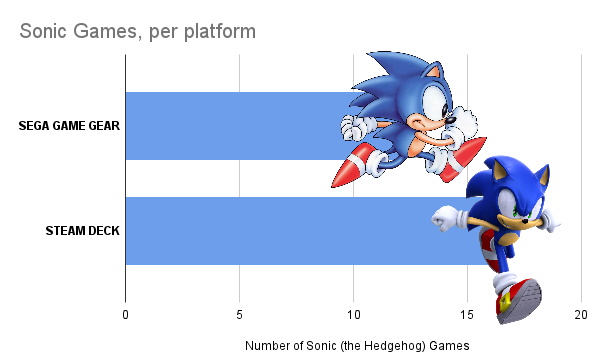Steam Deck compared: Gabe Gear vs. Game Gear
Is the Steam Deck a better gaming device than Sega's 32-year-old handheld?

When I arrived at Valve to go hands-on with the Steam Deck, I knew I needed to make the one comparison everyone's been waiting for: the Steam Deck vs. the Game Gear. The Steam Deck looks like it could revolutionize on-the-go PC gaming, with a powerful processor and graphics, loads of input options and an OS that works almost as smoothly as a console. But is it really a better gaming experience than Sega's hottest device of 1991?
Has Valve done what Segouldn't?
Game Gear vs. Gabe Gear: The feel
The Steam Deck is surprisingly large in person, and its button layout also looks awkwardly top heavy. But once it's in your hands, it's clear those things aren't an issue. It's nicely contoured and easy and natural to hold. It feels like a sturdy, premium device.
The Game Gear puts up some decent competition here despite its age. It has a similar horizontal layout and a nice groove on the front for your thumb to fit into. But it isn't nearly as nice in the hand as the Steam Deck. The older, harder plastic is less comfortable to touch and there's no contouring on the back of the system to fit your hands. Perhaps nice plastic hadn't been invented yet in 1991.
Game Gear vs. Gabe Gear: The buttons
The Game Gear gets credit for having buttons, the bare minimum required for a game system. Compared to the Steam Deck's clicky d-pad, the Game Gear's is a mushy circle that likes to get stuck if you push in too hard on the diagonals. Its two main action buttons are labeled 1 and 2 instead of A and B as nature intended, but they are, at least, perfectly functional.
The Steam Deck is slightly more stacked. With two analog sticks that feel great under the thumb, a quality d-pad, triggers and shoulder bumpers, a face button array and more, it's clearly a system designed to play a wide variety of games. The Game Gear has no analog sticks, so 3D games are out. This is likely a big strike against it unless you're one of those spirit cops from Pixar's Soul who somehow exist as 2D beings in a 3D world.
Game Gear vs. Gabe Gear: The screen

The Game Gear has a color screen, which was a big deal in 1991. Surely it would crush the puny monochrome Game Boy! You could even buy a TV tuner for it and watch American Gladiators. But old LCD tech and poor backlighting meant it was actually a washed out smeary mess.
The biggest gaming news, reviews and hardware deals
Keep up to date with the most important stories and the best deals, as picked by the PC Gamer team.
At 3.2 inches and 160x144 pixels, it's a close second place to the Steam Deck's vibrant, sharp 1280x800 screen.
Game Gear vs. Gabe Gear: The battery
Valve expects the Steam Deck to get up to eight hours of battery life in lighter games and streaming. That's on one rechargeable internal battery. The Game Gear, however, can chew through six AA batteries in under four hours.
If we're judging on appetite or number of batteries, the Game Gear is the clear winner.
Game Gear vs. Gabe Gear: Does it work?
The Steam Deck works very well indeed. While I did experience a few crashes using this unfinished hardware, it successfully played new, demanding games like Death Stranding and Guilty Gear Strive.
This Game Gear has a blown capacitor from a family trip to Disneyland and does not work even a little bit. Poor showing, Game Gear.
Game Gear vs. Gabe Gear: The price
The Steam Deck's three models cost $399, $529 and $649. You can buy a Game Gear on Ebay for about $30, if you're okay with it being broken, or spend about $50 for a Game Gear Micro that comes preinstalled with some games.
Until Valve gets the Steam Deck's price down to $50, it just can't compete in the Game Gear market.
Game Gear vs. Gabe Gear: Quantitative analysis of how many Sonic games there are
The Game Gear has 12 Sonic games. Steam has 16 Sonic games. Incredibly, there's almost no overlap between the two. Technically this is a win for Steam, but if you want to play a few good Sonic games and a lot of bad ones, either platform has you covered.


Wes has been covering games and hardware for more than 10 years, first at tech sites like The Wirecutter and Tested before joining the PC Gamer team in 2014. Wes plays a little bit of everything, but he'll always jump at the chance to cover emulation and Japanese games.
When he's not obsessively optimizing and re-optimizing a tangle of conveyor belts in Satisfactory (it's really becoming a problem), he's probably playing a 20-year-old Final Fantasy or some opaque ASCII roguelike. With a focus on writing and editing features, he seeks out personal stories and in-depth histories from the corners of PC gaming and its niche communities. 50% pizza by volume (deep dish, to be specific).

